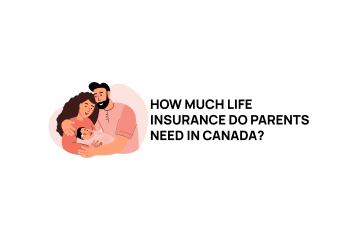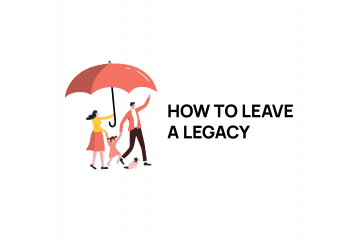Does vaping affect life insurance premiums? Can I get life insurance if I vape? Life insurance companies calculate their premiums based on a perspective client’s lifestyle, this means that any activity that increases the risk of injury or disease will increase your life insurance premium. But does vaping count as a higher risk activity? The short answer is: YES
In this article, we will go over why vaping hikes up your insurance costs and what options exist for long-standing vape users.
Highlights (does vaping affect life insurance)
- Vaping the same impact as smoking for most life insurance policies in Canada
- The cost of vaping can more than double your life insurance premiums in some cases
- If you stop vaping for 12 consecutive months, you qualify for non smoking rates
- We can provide quotes for non smoking and smoking rates from all companies in Canada
In This Article
- Why Does Vaping Affect My Life Insurance Premiums?
- How Dangerous Do Life Insurers Think Vaping Is?
- Vaping Nicotine Products vs. Cannabis Products
- Frequently Asked Questions
Why Does Vaping Affect My Life Insurance Premiums?
E-cigarettes, or vapes, have been on the rise since the early 2000s. Although originally patented in 1963, the electronic cigarette only found commercial success once smoking regular cigarettes began to fall out of fashion.[1] The direct correlations between smoking and diseases like heart attack, cancer, and stroke, forced many people to find healthier alternatives. Cue the e-cigarette. Because of the smokeless technology, the e-cig was largely regarded as less harmful than their predecessors. However, this early presumption has come under scrutiny recently.
Although e-cigarettes have been linked to fewer serious adverse effects than combustible tobacco cigarettes, they have raised numerous red flags. A 2020 review of electronic cigarettes linked them to a 40% increase in the risk of developing asthma and a 50% increase in chronic obstructive lung conditions.[2] Those using e-cigarettes for cannabis products may experience the most dangerous effects to date. In 2019, a wave of hospitalizations across the United States drew attention to the large amount of vitamin-E acetate found in cannabis vaping products. It is thought this additive is largely responsible for the nearly 3000 hospitalizations and 68 deaths. The disease is now known as EVALI (E-cigarette/Vaping Associated Lung Injury) and symptoms include coughing, difficulty breathing, nausea, vomiting, fever, and chills.[3]
It’s also worth mentioning the irony of the e-cigarette. These tobacco alternatives were originally thought to help smokers quit by giving them a less dangerous source of nicotine. There is some evidence to suggest this works, although other nicotine substitutes (such as patches or gum) are just as effective. However, because they are marketed as safer than cigarettes, vapes have actually encouraged young people to start consuming nicotine, which often leads to smoking. So, even if you don’t smoke combustible tobacco, your insurer can consider you much more likely to start doing so if you vape regularly.
So, in sum, vaping is believed to increase the risk of certain health conditions and premature death. As such, life insurance companies treat users of e-cigarettes as higher risk clients.
How Dangerous Do Life Insurers Think Vaping Is?
Because of their similarity to combustible tobacco products, those who vape frequently are often lumped in with those who smoke regularly. This means that your insurance rate depends on how your insurance company defines a “smoker.”
For instance, BMO Insurance (and most standard insurers) will define you as a smoker if you have used a tobacco product within the last 12 months. This includes mooching a quick smoke from a friend during an evening out. Let’s keep going with BMO as our example insurer to see just how much money vaping will cost you.
Here is a breakdown of the cost differences of $250,000 of 20 year term life insurance coverage from BMO Insurance (as of Jan 11 2021, standard rates). All rates are monthly.
| $250,000 Coverage | Non Smoker | Smoker |
| Female – Age 30 | $17.55 | $27.00 |
| Male – Age 30 | $20.03 | $37.35 |
| Female – Age 40 | $25.88 | $55.80 |
| Male – Age 40 | $29.48 | $78.53 |
| Female – Age 50 | $57.15 | $122.40 |
| Male – Age 50 | $75.38 | $204.30 |
As you can see, there is a substantial difference in prices — and this difference adds up. Over the course of twenty years, the smoker would end up paying in some cases more than double compared to the non smoker. Keep in mind, these prices are for a standard insurer. Non-standard insurers who specialize in higher risk clients have a different definition for smokers.
Canada Protection Plan (CPP) is one of the nation’s leading providers of non-standard insurance. The co-president of CPP, Michael Aziz, has stated that clients who consume tobacco, nicotine, or cannabis (using a vape or otherwise) less than five times a week are considered non-smokers.[4] This is a substantial difference when compared to our previous example. So, if you use a vape five times a week or less, you might get better rates from a non-standard insurer, such as CPP, than standard provides like BMO. Keep in mind, non-standard insurance does cost more when compared to traditional life insurance plans, so the savings may not be substantial enough to be worth it.
This is when you would want to reach out to one of our brokers to discuss in more detail.
So, we now know just how different insurance companies value their non-smoking clients. But is vaping cannabis considered just as dangerous as vaping nicotine products?
Get a free quote
Vaping Nicotine Products vs. Cannabis Products
Once again, I’m afraid the answer is a simple yes. Smoking is smoking is smoking to insurance companies. Whether it’s smoke inhaled through a filter, or vapor inhaled through a mouthpiece, breathing pretty much anything into your lungs recreationally will increase your life insurance costs — and by a lot!
So, your best bet as a smoker when shopping for life insurance is simply… to stop smoking. Easier said than done, no doubt. But the savings could be one more incentive to improve your health by eliminating certain bad habits.
You’ve reached the finish line! We hope this article has helped answer some of your questions and put the real cost of smoking into a helpful perspective.
Frequently Asked Questions
If you are currently classified as a smoker because you have vaped or used any other tobacco/nicotine products, you can qualify for non smoking rates if you have 12 consecutive months of no vaping, tobacco or nicotine use.
You can use our free online life insurance quoter. Click here to find out your rates instantly, for free.
Sources
[1] https://www.ncbi.nlm.nih.gov/pmc/articles/PMC5432409/
[2] https://erj.ersjournals.com/content/early/2020/10/15/13993003.01815-2019
[3] https://www.cdc.gov/tobacco/basic_information/e-cigarettes/severe-lung-disease.html#map-cases




